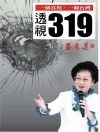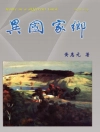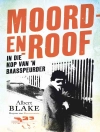Israeli youth voyages to Poland are one of the most popular and influential forms of transmission of Holocaust memory in Israeli society. Through intensive participant observation, group discussions, student diaries, and questionnaires, the author demonstrates how the State shapes Poland into a living deathscape of Diaspora Jewry. In the course of the voyage, students undergo a rite de passage, in which they are transformed into victims, victorious survivors, and finally witnesses of the witnesses. By viewing, touching, and smelling Holocaust-period ruins and remains, by accompanying the survivors on the sites of their suffering and survival, crying together and performing commemorative ceremonies at the death sites, students from a wide variety of family backgrounds become carriers of Shoah memory. They come to see the State and its defense as the romanticized answer to the Shoah. These voyages are a bureaucratic response to uncertainty and fluidity of identity in an increasingly globalized and fragmented society. This study adds a measured and compassionate ethical voice to ideological debates surrounding educational and cultural forms of encountering the past in contemporary Israel, and raises further questions about the representation of the Holocaust after the demise of the last living witnesses.
Table des matières
List of illustrations
List of tables
Acknowledgements
Preface: Seeking a personal past in the deathscapes of Poland
Chapter 1. Introduction and Methodology
The Shoah, Jewish-Israeli identity and the voyages to Poland Identifying the voyage as a rite of pilgrimage
- The voyage as model and mirror
Commemoration and collective memory
- Jewish memory paradigms and their Zionist transformations
- Territorializing Jewish history in Zionist practice
Israeli social research on Shoah memory
- From personal trauma to social constructivism
- Previous research on the Poland voyages
From process to product: The ethnography of the voyage
- Context, Structure, and Performance in the Voyages to Poland
- Organization of the Book
Chapter 2. The historical and social context of Iraeli Shoah commemoration
The history of Shoah memory in Israel
- Early reactions to the Shoah
- From the Six Day War to the Yom Kippur War
- Begin’s rise to power: The use and abuse of Shoah memory
- Generational time, the search for roots, and Israeli ethnicity
The Shoah in Israeli education – school textbooks and curricula
Spaces and times of Israeli Shoah Commemoration
- Yad Vashem: monument and memory
- Holocaust Memorial Day: calendar and commemoration
Chapter 3. The structure of the Poland voyages
Origins, history, and proclaimed aim of the voyage
The title of the voyage: seeking my brothers – the masa to Poland
- The voyage group as substitute family
- The Poland voyage as a masa
Administration and voyage staff
- Voyage staff
- The delegation leader
- The guides
- The accompanying teachers
- The doctor and nurse
- The Polish guide and driver
- The survivor – witnesses Security personnel
Logistic arrangements: Food, clothing, and flags
The preparatory program
- Selection of participants
- The content of the preparatory program
The itinerary and its implicit messages
- Exterior and interior space
- Classification of places in ‘exterior space’: death, life, and Polish ‘ventilation’ sites
- Allotment of time at sites
The rhythms of tim e in the voyage itinerary
Student expectations, Polish landscape, and guiding narratives
- Guides’ narrative techniques
- From structure to performance
Chapter 4. Performing the Poland voyages
On the road: Walking through the Poland Voyage
Recruitment and voyage preparations at Sulam High School
The threshold of Poland
- – day one The road to Treblinka
- – day two ‘This is Treblinka Station’
- Tykocin: Synagogues of the past and the survivor as sheriff
- ‘See, there are no birds in this forest’
- Evening discussion: when do we get to the Shoah?
Bus travel, ventilation and prayer
- – day three Kabbalat Shabbat: Orthodox Judaism as safe Zionist heritage
Shabbat rest, Shabbat shopping
- – day four Slouching through Cracow
- (Non-)encounter with a Polish school
- Singing for home
- After Midnight: the staff meeting
The heart of the Shoah: Auschwitz-Birkenau
- – day five Auschwitz I – Approaching the contested site of memory
- Manifesting Israel at Auschwitz
- Visiting the exhibition in Auschwitz I Birkenau — the Heart of the Death Camp ‘Honoring’ the Righteous Gentile and the witnesses
Ventilazia: on the road again
- – day six Touching the icons of death: Majdanek
- – day seven The visit to Majdanek
- Entering the site
- The gas chambers
- Shoes as relics: odour and authenticity
- ‘We’re the same children who were there at the end’
- Closing the circle: the final evening discussion
Going home: From Warsaw to Tel Aviv
- – day eight Confronting the not-yet-dead Diaspora
- The route of victory
- Final ceremony: the little guy sends us on our way!
Chapter 5. The ceremonies of the Poland voyages
Introduction: What makes ceremonies different?
Contexts of voyage ceremonies
- School ceremonies in Poland and Israel
- Sites, times, and configurations of ceremonies
Representative examples of ceremony types
- Delegation-wide ceremonies
- Above the death pits, beneath the flag of Israel: the ceremony at Birkenau
- Warsaw: a ceremony that failed
- Bus-group ceremonies: ‘Every person has a name’
- Individual ritual acts
- ‘Honoring’ ceremonies for Righteous Gentiles and witnesses
Religious texts and the commemorative ceremonies
The close of the ceremony: Hatikvah and the flag
Ceremonies as ‘triggers’: group crying and consolation
- The ceremonies: Conclusions
Chapter 6. Homecoming – the transmission of Holocaust memory and Jewish-Israeli Identity
Becoming a witness – the aftermath of the voyage
- Transmitting the voyage experience
- Talking about the voyage: Conversations with classmates, family, and survivors
- Presentations: Albums, videos, ceremonies, and the future of ‘witnessing’
Subsequent effects of the voyage on participants
- Changes in attitudes towards Jewish tradition and the Diaspora
- The voyage and Polish others
- The voyage and dedication to the nation
- Dedication to the flag and students’ political opinions
- Survival by proxy and service in the Israeli army
The future of the Israeli voyages to Poland
Chapter 7. Holocaust memory, national identity, and transformative ritual
Conclusions: Poland voyages as national pilgrimages
Cosmopolitan and nationalist memories of the Shoah in the ages of representations
The Poland voyages and modern state ritual: An event that models promoted by a bureaucracy
- Models and mirrors, bodies and texts
- The risks of transformatory events in bureaucracies
Afterword
Appendix: The orthodox delegations to Poland
Bibliography
Index
A propos de l’auteur
Jackie Feldman lectures in Social Anthropology at Ben Gurion University, Beersheba, Israel. His areas of interest are anthropology of religion, collective memory, pilgrimage, and tourism. He has published on Holocaust memory and pilgrimages to the Second Temple and worked as a tour guide for Christian pilgrims to the Holy Land.












